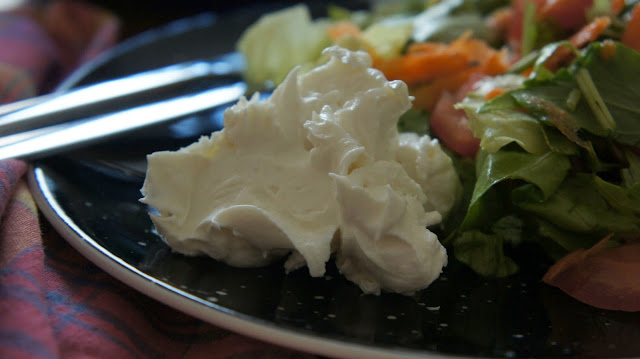In my humble opinion, the greatest compliment one can pay to a person who likes to cook is when they say "Wow, you make [fill in the blank] just like my grandma". Or "just like my mother" (but bear in mind that grandmother is the superlative form of mother).
It could be regarding a kitchen technique or a food that is being served.
I think that's because grandmas in general have had at least half a lifetime to learn and test what works best.
Then, even when a recipe goes wrong, quickly they think of a way to fix it that turns it into something delicious.
The other day I got to rescue a recipe that went wrong, and oh did I feel like a ninja! I was preparing yogurt, but the weather was incredibly warm and it stayed out of fridge too long.
It curdled and I thought "all right, what do I do now?".
So I strained the (1liter) curdled yogurt in a cloth napkin, and let it rest refrigerated for about 8 hours, so that it would loose whey.
The method is: place the yogurt in the napkin, the napkin inside a large strainer, the strainer in a bowl which will collect the liquid. And whenever the liquid level is high enough to touch the strainer, it must be transferred to another bowl or to a bottle. (There is a picture of this scheme right below).
In this recipe the whey won't be used, but Tamara says it is very nutritious and can be used in smoothies for example.
Preparing it in this way, even considering I left it straining for several hours, didn't grant me a solid cheese. The result was a paste, which tasted very much like quark, except less acid and not as dry.
I thought it might have something to do with the fact that I have used semi-skimmed milk to make the yogurt, so maybe there wasn't enough fat to make the cheese solid.
But then I gave it a second thought, and came up with this: the cloth napkin may be woven too close, not allowing for the liquid to pass through.
I have used it mainly in sauces, or spread over bread.
In the second time I made the cheese, I followed the same logic: from (1,5 liter) semi-skimmed yogurt. But this time it had not curdled, so I added the juice of one lime and let it sit for a couple minutes.
And instead of draining the yogurt in a cloth napkin I drained it in two layered cheesecloths. To avoid a shape that could become too horizontal/ spread, I tied the cloths with bread package wire.
A picture may be helpful in this explanation:
Aside from that, everything was the same. The second version resulted in a cheese that can be cut with a knife, although it is very soft.
If you like, add 1 or 1 1/2 teaspoon salt, but I think the unsalted cheese is much more versatile: it can be spread over bread, can be served with fruit, with marmalade, can be used to prepare cheesecake and sweets in general, and also works great for quiche filling, empanada filling, served with soup or as a base for sauces.
After all, it is kind of impossible to remove salt, but it's quite easy to add.








0 comentários:
Post a Comment